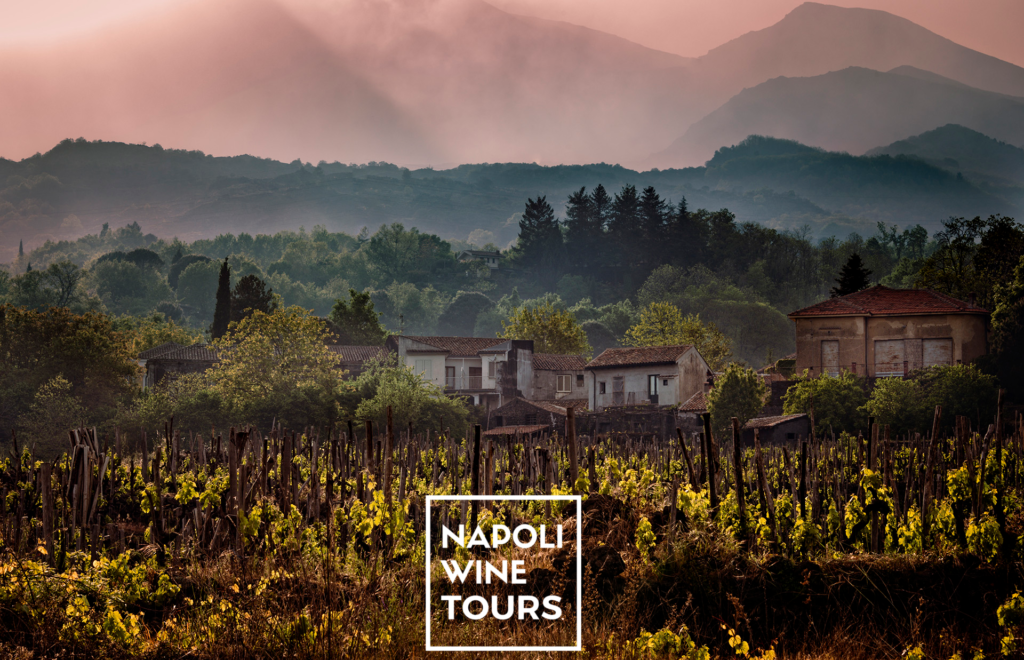
VOLCANIC WINES
There are two words that have recently made their way into the international wine sector: VOLCANIC WINES. This is demonstrated by the birth of a related association, the number of thematic tastings growing considerably, the proliferation of literature on the topic, and the passion shown by eno-lovers for these wines.
Let’s try to understand what lies behind all this: the fashion of the moment or the real re-discovery of very high quality and typically unique wines? In my humble opinion the two things go hand in hand, so for once we have say thank you to the “trends” if today we find such a large number of fans of volcanic wines. By trend we mean the new eno-cult: the “natural wines”. Eh … yes them, they who have led the way and preached a lot about the naturalness of wine, about the need to re-evaluate and enhance the terroir, the ones who fight daily against oenological convention. So, we thank them if slowly during the search for the terroirs we came to the slopes of the volcanoes, some of which are still active! The key word is minerality! This term, which is not, technically speaking, a descriptor, but neither it is a metaphorical term. It is intended to express the idea that the geological / mineral elements of the soil give the wines unique, unrepeatable characteristics, therefore they are the typical features of the terroir. In wine the presence of minerals 10 times higher than mineral waters: Potassium, Calcium, Magnesium, Iron, Phosphates, Sulphates, Zinc, Copper, Sodium, Silicon, etc. Some of these are the cause of unpleasant olfactory perceptions, others instead they give uniqueness to the wine. From the sapidity … to the uniquess of that sapidity, from the smell of flint … to that of flint we certainly find ourselves in front of wines of great personality, each representative of its own territory; and without entering into the debate on the real passage of minerals from the sole to the vineyards and therefore to the grapes, let’s prepare to analyze 3 representative Italian wines from the North, Central and South, since we must not forget that the whole national territory is rich in volcanic areas.
Starting from Northern Italy, in the hilly area between Verona and Vicenza, we find the denomination Lessini Durello. The DOC takes its name from the autochthonous grape variety Durella, the etymology of the name is almost certainly attributed to the thickness and leathery consistency of the skin. Durella has its roots in these high hill soils characterized by an incredible fossil residue, testifying to the presence in this area of a prehistoric sea: the grape in fact gives the wines unmistakable iodine and mineral characteristics, as well as a nervous acidity and vibrant that makes it ideal for sparkling wine and without wanting to make comparisons we underline how this soil is geologically similar to that of the Champagne region. So without hesitation let us try by tasting a Lessini Durello Classic Method with its strong personality, its unique being, capable of breaking the mold.
Our stop in central Italy is in Lazio, a region which in turn has various volcanic areas. We will focus on the Castelli Romani area, an area that arises from the collapse of the gigantic Lazio volcano, therefore with very different soils. The most cultivated grapes are: Malvasia del Lazio, Tuscan Trebbiano, and white Malvasia di Candia for whites; Cesanese, Merlot, Montepulciano, Sangiovese for the reds. Special attention deserves the DOCG Cannellino di Frascati obtained with: Malvasia bianca di Candia and / or Malvasia del Lazio minimum 70%; It is a wine obtained from the vinification of late harvests and has always been considered the sweet wine of Rome. It surprises us with its good acidity (if the year permits), sometimes maintaining even salinity notes, with hints of ripe citrus and candied fruit.
We end with the South, and what better expression of volcanic wine could we find if not the Etna DOC. This volcano, still in full eruptive activity, is often called “an island on the island” because of its territorial and climatic typicality. UNESCO World Heritage On its very steep and steep slopes made up of sandy soils, various varieties of vines are cultivated (in many cases on foot), all indigenous: for the whites Carricante and Catarratto, for the reds Nerello Mascalese and Nerello Cappuccio. Difficult grape variety Nerello is often compared with Nebbiolo for late ripening (second ten days of October) and Pinot Noir as regards sensitivity to the vintage and the territory to which it belongs. Both Narelli are turned into wine together. The wines produced with Nerello Mascalese are characterized by a good alcoholic strength, high total acidity, not very intense ruby red color, fruity hints of high intensity and a good balance and astringency, while those produced with Nerello Cappuccio have a contained alcohol content and a good total acidity and are characterized by an intense red color. The smell of the floral and fruity hints of cherry are intense and the taste has a high structure. As for the white ETNA, Carricante has a straw yellow color with green to deep yellow reflections, with a complex and intense aroma, characterized by hints of citrus flowers; it is savory on the palate. Catarratto (which from 2018 can also be called GLOSSY), is characterized by a high acidity which positively affects the freshness of aromas and flavors. From an olfactory point of view, the predominant scent is that of white flowers while at the taste level it is dry and of good flavor.
To experience the thrill of discovering the Italian Volcanic Wines let yourself be guided by an expert sommelier of Napoli Wine Tours. Contact us to book your tasting.
